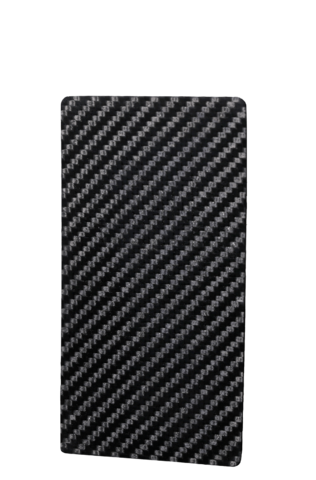Hybrid material made of natural stone and carbon fibre
Life Cycle Transition
About the Product

Natural stone is the umbrella term for all building materials made of solidified, sedimentary and metamorphic rocks. The cutting of natural stone absorbs CO2. Although the extraction is harmless to health, it is an indigenous resource whose occurrence is limited. However, the deposits of hard stone such as granite are 50 times higher than those of the soft stone limestone from which cement is made. Natural stone has a low density (2500–3000 kg/m3, aluminium is 2700kg/m3) and thermal conductivity. Therefore, it is suitable as thermal mass. At present, they are mainly used outdoors but also indoors as floor coverings, façade cladding, window sills, stair treads or roofing.
Carbon fibres are manufactured synthetically and consist of at least 90% carbon. They are currently still produced from synthetic fossil oils, pitch, or viscose. Research is already investigating in PAN-based (polyacrylonitrile) carbon fibres from bio-oils that can bind CO2 (TU Munich, Algae Technology Centre). Carbon fibres are characterised by their special strength in the direction of the fibres at a comparatively low weight. They are also weather and temperature resistant. In order to make use of their mechanical properties, they are usually used as carbon fibre reinforced plastics (CFRP) and therefore cannot be recycled on high quality.
CFS®- CarbonFibreStone is a composite material made of natural or artificial stone and carbon fibre, developed by TechnoCarbonTechnologies®. The hybrid material combines the compressive strength of natural stone with the tensile strength and stiffness of carbon fibre. The idea of the material combination is to replace cement, or concrete and steel, as well as aluminium, to construct buildings, cars and ships. As the production of carbon fibre is energy-intensive, the advantage of the composite material lies in the saving of solid carbon material. The carbon fibre is laid on the surface of the stone and can be peeled off manually at the end of its life. Thus, the composite is broken down into stone and carbon coating and can be reused and sorted by material.
Manufacturer: TechnoCarbonTechnologies GbR